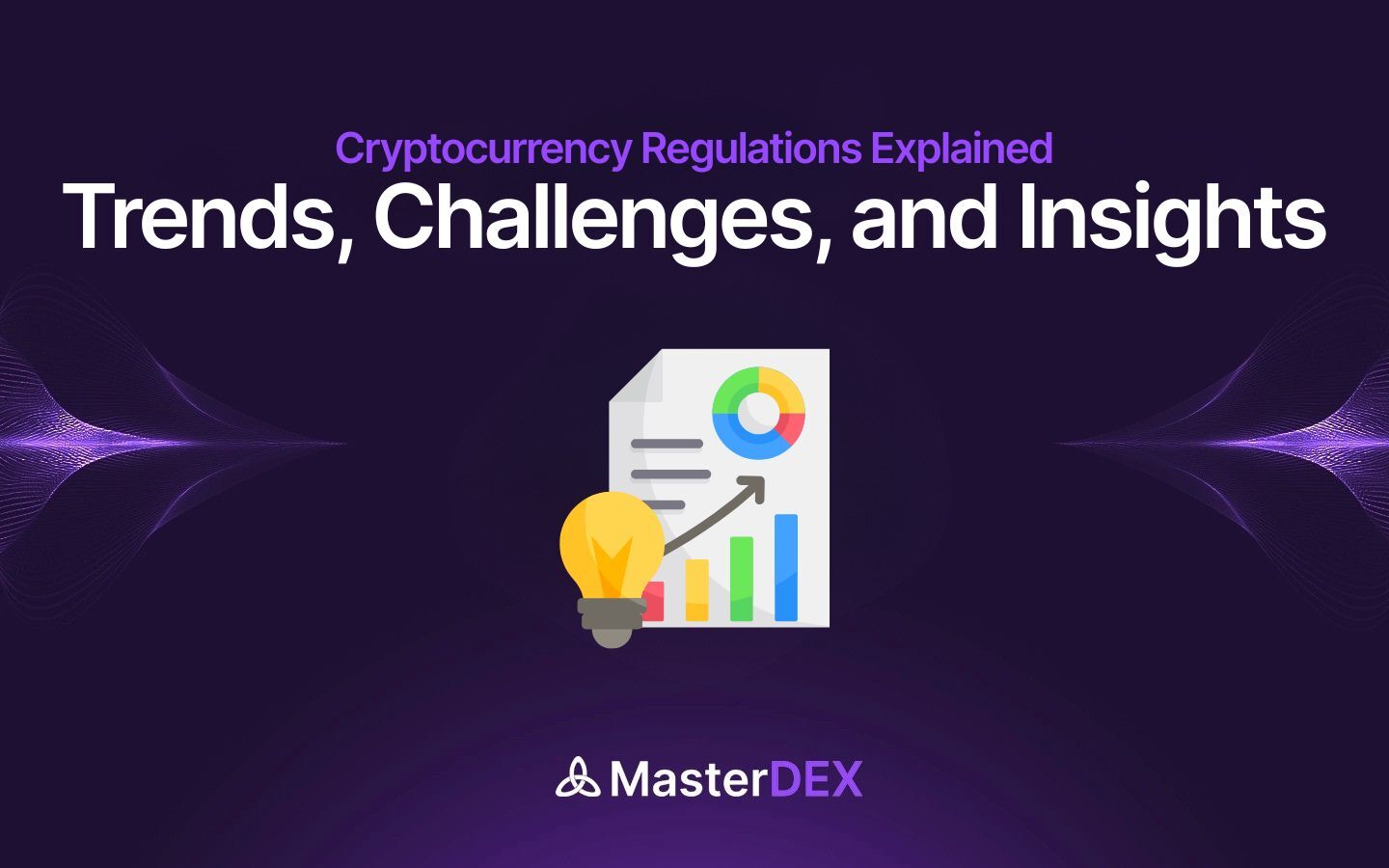Table of Contents:
ToggleIntroduction
Cryptocurrencies have rapidly evolved from niche digital experiments into a mainstream financial phenomenon. From Bitcoin’s launch in 2009 to the proliferation of thousands of digital tokens today, the crypto market has transformed the way people perceive money, investments, and financial transactions. The decentralized nature of blockchain technology offers numerous advantages, including transparency, borderless transfers, and reduced reliance on traditional financial intermediaries.
However, this rapid growth has also brought new challenges. The volatility of crypto markets, coupled with the potential for fraud, market manipulation, and misuse for illicit activities, has made clear regulatory oversight essential. Governments and regulatory bodies worldwide are increasingly focused on developing frameworks that balance innovation with investor protection. Proper regulation is critical not only for safeguarding participants but also for building confidence in the legitimacy and long-term viability of the cryptocurrency ecosystem.
Global Perspectives on Crypto Regulations
Cryptocurrency regulation varies widely across the globe, reflecting each country’s approach to innovation, financial stability, and investor protection. Understanding these global perspectives provides insight into the evolving landscape and helps market participants navigate compliance and risk.
United States: Regulatory Actions and Enforcement
The U.S. has taken a multi-agency approach to crypto regulation. The Securities and Exchange Commission (SEC) monitors digital assets for securities compliance, while the Commodity Futures Trading Commission (CFTC) oversees derivatives and commodities-linked tokens. The Internal Revenue Service (IRS) enforces taxation, and other federal agencies regulate anti-money laundering (AML) measures. Recent initiatives, such as the SEC’s “Crypto 2.0” task force, aim to create a more structured framework, balancing innovation with investor protection.
European Union: Markets in Crypto-Assets (MiCA) Regulation
The EU has been proactive in regulating cryptocurrencies, most notably through the Markets in Crypto-Assets (MiCA) regulation, which took effect in January 2025. MiCA provides a comprehensive legal framework for crypto-asset offerings, trading platforms, and stablecoins, ensuring market integrity and investor protection. By standardizing rules across member states, the EU aims to foster trust and promote sustainable growth in the crypto sector.
China: Restrictive Measures and Their Impact
China has taken a stringent stance on cryptocurrencies. The government has banned cryptocurrency exchanges, ICOs, and crypto mining activities, citing risks to financial stability and energy consumption. While this has led to market migration to other jurisdictions, it underscores the potential for strict regulation to reshape global crypto activity.
El Salvador and the Central African Republic: Adoption as Legal Tender
Some countries have embraced cryptocurrencies more openly. El Salvador made Bitcoin legal tender in 2021, while the Central African Republic followed suit in 2022. These moves aim to boost financial inclusion and attract investment, although they also raise questions about regulatory oversight, economic stability, and monetary sovereignty.
India: Regulatory Developments and Current Framework
India has experienced a dynamic journey in cryptocurrency regulation. Initially, the Reserve Bank of India (RBI) issued a banking ban in 2018, restricting financial institutions from providing services to crypto businesses, citing risks of money laundering and financial instability. This move created significant uncertainty and slowed crypto adoption. However, in March 2020, the Supreme Court overturned the RBI ban, paving the way for renewed market growth and increased investor participation.
Since then, India has focused on establishing a clear regulatory framework. In 2022, the government introduced a 30% tax on crypto gains, along with a 1% TDS on transactions above a specified threshold. While these measures aim to formalize the market, legislation is still evolving, with proposals for comprehensive crypto laws under discussion to ensure investor protection and market integrity.
Common Themes in Global Crypto Regulations
Despite the diversity in regulatory approaches worldwide, several common themes emerge across jurisdictions. These themes highlight the shared priorities of governments and regulators in fostering a secure, transparent, and sustainable crypto ecosystem.
1. Taxation Policies
Governments globally are focusing on establishing clear taxation rules for cryptocurrencies. This includes capital gains tax on trading profits, transaction reporting requirements, and in some cases, value-added taxes (VAT) on crypto services. Clear taxation policies aim to bring digital assets into the formal financial system, enhance revenue collection, and provide certainty for investors and businesses.
2. Anti-Money Laundering (AML) and Counter-Terrorism Financing (CTF) Measures
Cryptocurrencies’ pseudonymous nature raises concerns around illicit activities. Regulators are increasingly mandating compliance with AML and CTF guidelines. Exchanges and wallet providers are often required to perform KYC (Know Your Customer) checks, monitor suspicious transactions, and report them to authorities, ensuring that the crypto ecosystem cannot be exploited for illegal purposes.
3. Consumer Protection Initiatives
Investor protection is a top priority, especially in markets prone to fraud, scams, and high volatility. Regulatory measures include requiring disclosures about risks, limiting marketing of high-risk tokens to retail investors, and creating frameworks to resolve disputes. These initiatives aim to build trust and safeguard participants from financial loss.
4. Market Integrity and Anti-Manipulation Efforts
Maintaining fair and transparent markets is crucial for adoption and credibility. Regulators worldwide are focusing on preventing market manipulation, insider trading, and wash trading on crypto exchanges. Licensing and auditing requirements, coupled with surveillance mechanisms, help ensure that crypto markets operate fairly and efficiently.
Emerging Challenges in Crypto Regulation
As the cryptocurrency ecosystem expands, regulators face several emerging challenges that require innovative solutions and adaptive frameworks.
1. Decentralized Finance Oversight
DeFi platforms enable users to lend, borrow, and trade without traditional intermediaries. While this decentralization promotes financial inclusion and innovation, it also complicates regulatory oversight. Monitoring transactions, enforcing compliance, and addressing security breaches or fraud are difficult without central authorities. Regulators are exploring risk management standards, smart contract audits, and accountability mechanisms that do not hinder innovation.
2. Stablecoins and Algorithmic Tokens
Stablecoins, pegged to fiat currencies or other assets, and algorithmic tokens present unique regulatory concerns. Key issues include reserve transparency, systemic risk, and potential algorithmic failures. Authorities are increasingly implementing rules for disclosures, reserve audits, and capital requirements to protect investors and maintain financial stability.
3. Cross-Border Compliance and Legal Ambiguity
Cryptocurrencies operate across borders, creating jurisdictional and legal challenges. With countries adopting vastly different approaches, from permissive to highly restrictive, regulatory ambiguity arises. Exchanges, wallet providers, and investors must navigate complex international compliance requirements, which can increase operational risk and legal uncertainty.
4. Technological Evolution Outpacing Regulation
Blockchain technology is evolving rapidly, with innovations such as layer-2 scaling solutions, NFTs, tokenized real-world assets, and AI-driven protocols. Regulators often struggle to keep pace, which can leave gaps in oversight and investor protection. Adaptive, forward-looking policies are essential to ensure both market security and the continued growth of crypto innovation.
Conclusion: Navigating the Evolving Regulatory Landscape
The cryptocurrency market is maturing rapidly, and regulations are evolving in response to its growth, risks, and opportunities. Around the world, governments are striving to create frameworks that protect investors, ensure market integrity, and prevent illicit activities, while still fostering innovation. Key trends such as taxation clarity, AML/CTF compliance, consumer protection measures, and cross-border cooperation are shaping a more predictable and secure environment for digital assets.
For investors, businesses, and innovators, staying informed about regulatory developments is crucial to navigating this dynamic landscape successfully. As regulations continue to evolve, countries like India and others globally are likely to adopt more structured, innovation-friendly approaches, ensuring that cryptocurrency remains a legitimate, transformative force in the financial ecosystem.



